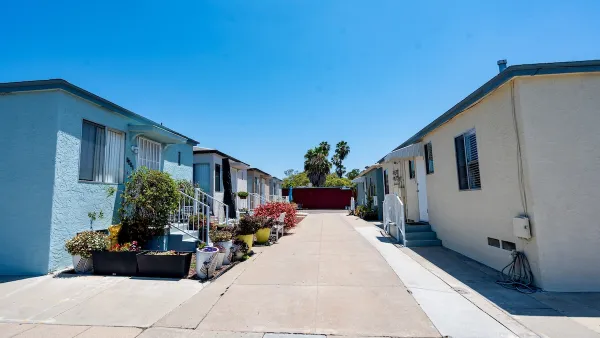The San Diego City Council's Land Use and Housing Commission approved a density bonus program to provide incentives for developers to build middle- and low-income housing.

"Officials are proposing to allow developers to build 25 percent more units than a property’s zoning allows if they agree to reserve 10 percent of the units for people making 80 percent to 120 percent of the region’s median income," according to an article by David Warrick in the city of San Diego.
The density bonus program is aimed at developing more residential units affordable to middle-income workers, like nurses, teachers, and firefighters. Median housing prices in the county, $600,000 median price for a home or $1,600 average rent for a one-bedroom apartment, are largely out of reach to those members of the community.
A last minute compromise helped the ordinance win approval from the City Council's Land Use and Housing Commission. After critics of the planned raised concerns that the density bonus for middle-income housing would discourage developers from building housing affordable to lower-income residents, an extra bonus was added to provide an "additional 50 percent density bonus for including the low-income units," according to Warrick.
FULL STORY: San Diego moving forward with middle-income housing incentive

National Parks Layoffs Will Cause Communities to Lose Billions
Thousands of essential park workers were laid off this week, just before the busy spring break season.

Retro-silient?: America’s First “Eco-burb,” The Woodlands Turns 50
A master-planned community north of Houston offers lessons on green infrastructure and resilient design, but falls short of its founder’s lofty affordability and walkability goals.

Delivering for America Plan Will Downgrade Mail Service in at Least 49.5 Percent of Zip Codes
Republican and Democrat lawmakers criticize the plan for its disproportionate negative impact on rural communities.

Test News Post 1
This is a summary

Test News Headline 46
Test for the image on the front page.

Balancing Bombs and Butterflies: How the National Guard Protects a Rare Species
The National Guard at Fort Indiantown Gap uses GIS technology and land management strategies to balance military training with conservation efforts, ensuring the survival of the rare eastern regal fritillary butterfly.
Urban Design for Planners 1: Software Tools
This six-course series explores essential urban design concepts using open source software and equips planners with the tools they need to participate fully in the urban design process.
Planning for Universal Design
Learn the tools for implementing Universal Design in planning regulations.
EMC Planning Group, Inc.
Planetizen
Planetizen
Mpact (formerly Rail~Volution)
Great Falls Development Authority, Inc.
HUDs Office of Policy Development and Research
NYU Wagner Graduate School of Public Service





























